Vue3 总结
Vue2 基础见:Vue2 总结(Basic)_凡 223 的博客
Vue2 开发见:Vue2 总结(开发)_凡 223 的博客
1. 简介
-
性能的提升
- 打包大小减少41%
- 初次渲染快55%,更新渲染快133%
- 内存减少54%
......
-
源码的升级
- 使用Proxy代替defineProperty实现响应式
- 重写虚拟DOM的实现和Tree-Shaking
......
-
拥抱 TypeScript
Vue3 可以更好的支持 TypeScript -
新的特性
- Composition API(组合API)
- setup配置
- ref与reactive
- watch与watchEffect
- provide与inject
......
- 新的内置组件
- Fragment
- Teleport
- Suspense
- 其他改变
- 新的生命周期钩子
- data 选项应始终被声明为一个函数
- 移除 keyCode 支持作为 v-on 的修饰符
......
- Composition API(组合API)
2. 创建使用
2.1 使用 vue-cli 创建
官方文档:https://cli.vuejs.org/zh/guide/creating-a-project.html#vue-create
## 查看@vue/cli版本,确保@vue/cli版本在4.5.0以上
vue --version
## 安装或者升级你的@vue/cli
npm install -g @vue/cli
## 创建
vue create vue_test
## 启动
cd vue_test
npm run serve
2.2 使用 vite 创建
官方文档:https://v3.cn.vuejs.org/guide/installation.html#vite
vite官网:https://vitejs.cn
什么是 vite?—— 新一代前端构建工具。
- 开发环境中,无需打包操作,可快速的冷启动
- 轻量快速的热重载(HMR)
- 真正的按需编译,不再等待整个应用编译完成。
传统构建 与 vite 构建对比图
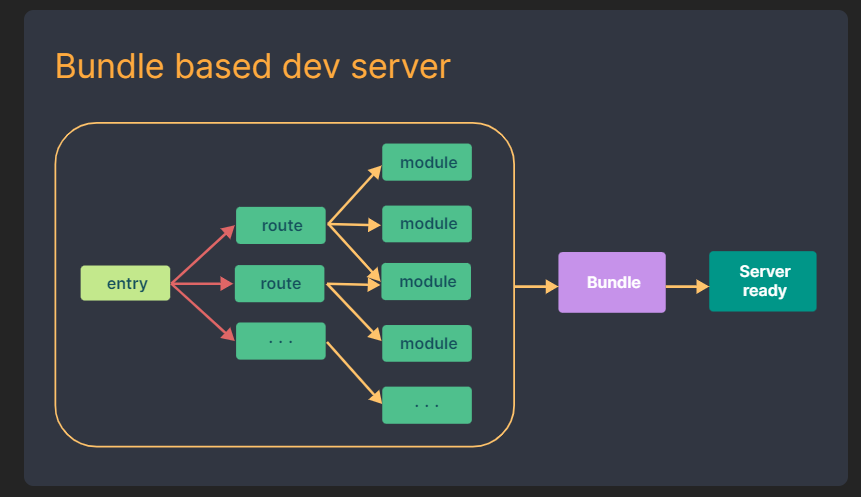

## 创建工程
npm init vite-app <project-name>
## 进入工程目录
cd <project-name>
## 安装依赖
npm install
## 运行
npm run dev
2.3 main.js 改动
// 引入的不再是Vue构造函数,引入的是一个名为 createApp 的工厂函数(不需要 new)
import { createApp } from 'vue'
import App from './App.vue'
// createApp(App).mount('#app')
// 创建应用实例对象——app(类似于之前Vue2中的vm,但app比vm更“轻”)
const app = createApp(App)
//挂载
app.mount('#app')
2.4 App.vue 改动
Vue3 组件中的模板结构可以没有根标签
<template>
<!-- Vue3组件中的模板结构可以没有根标签 -->
<img alt="Vue logo" src="./assets/logo.png">
<HelloWorld msg="Welcome to Your Vue.js App"/>
</template>
2.5 Vue3 开发者工具
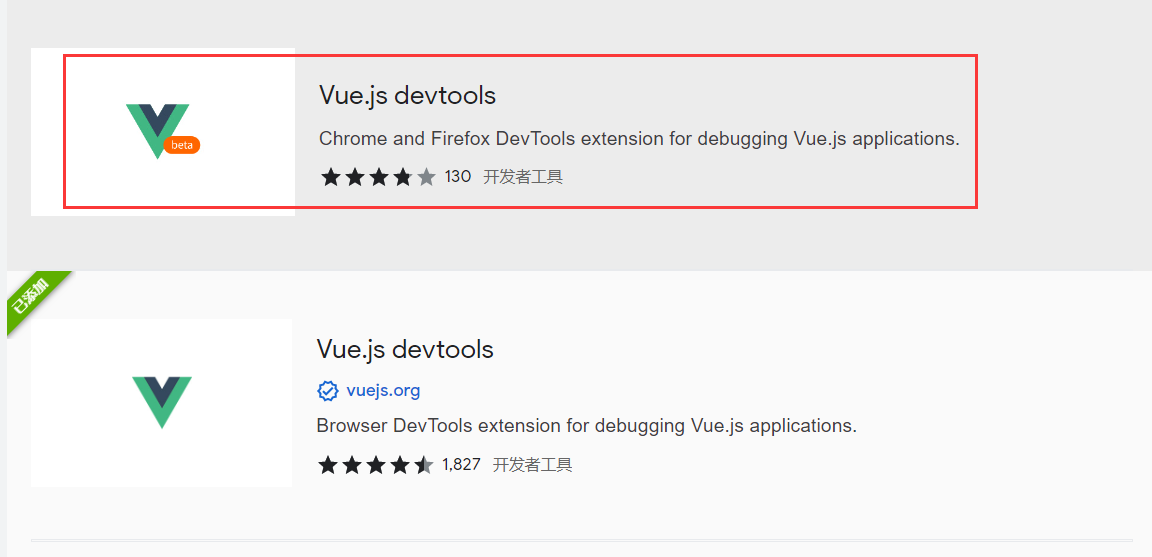
3. 常用 Composition API
3.1 setup 函数
- Vue3.0 中一个新的配置项,值为一个函数
- setup 是所有 Composition API(组合API)“ 表演的舞台 ”
- 组件中所用到的:数据、方法等等,均要配置在 setup 中
- setup 函数的两种返回值:
- 若返回一个对象,则对象中的属性、方法, 在模板中均可以直接使用
- 若返回一个渲染函数:则可以自定义渲染内容
<template>
<h1>姓名:{{name}}</h1>
<h1>年龄:{{age}}</h1>
<button @click="info">个人信息</button>
</template>
<script>
// import {h} from 'vue'
export default {
name: 'App',
setup() {
// 数据
let name = "张三"
let age = 18
// 方法
function info() {
alert(`我叫${name}, 年龄${age}岁`)
}
// 返回一个对象(常用)
return {
name,
age,
info
}
//返回一个函数(渲染函数),需要导入 h
// return ()=> h('h1','渲染')
}
}
</script>

1、尽量不要与 Vue2.x 配置混用
- Vue2.x 配置(data、methos、computed...)中可以访问到 setup 中的属性、方法
- 但在 setup 中不能访问到 Vue2.x 配置(data、methos、computed...)
- 如果有重名,setup 优先
2、setup 不能是一个 async 函数,因为 async 的返回值不再是 return 的对象,而是被 promise 包起来的,模板看不到 return 对象中的属性(也可以返回一个 Promise 实例,但需要 Suspense 和异步组件的配合)
3.2 ref 函数
如下,通过函数修改个人信息
<template>
<h1>姓名:{{name}}</h1>
<h1>年龄:{{age}}</h1>
<button @click="changeInfo">改变个人信息</button>
</template>
<script>
export default {
name: 'App',
setup() {
// 数据
let name = "李四"
let age = 18
// 方法
function changeInfo() {
name = "张三"
age = 20
console.log(name + age);
}
return {
name,
age,
changeInfo
}
}
}
</script>
发现实际值已经修改了,但页面并没有响应改变
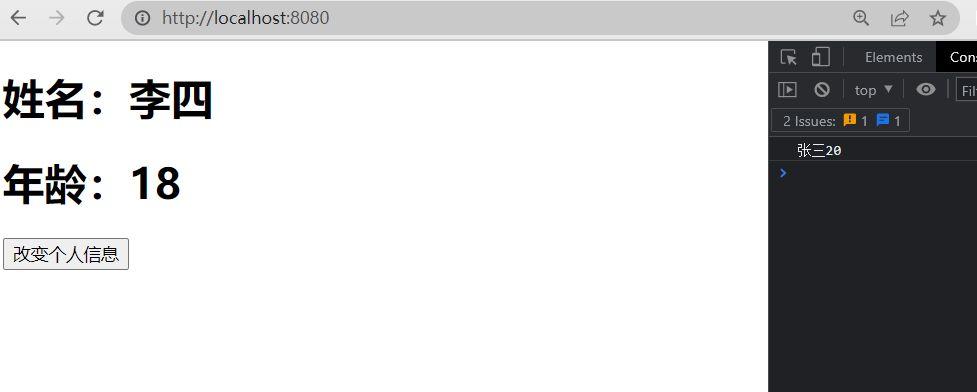
此时需要使用 ref 函数来定义响应的数据
- 作用:定义一个响应式的数据
- 语法:
const xxx = ref(initValue)- 创建一个包含响应式数据的引用对象(reference 对象,简称 ref 对象)
- JS 中操作数据:
xxx.value - 模板中读取数据: 不需要
.value,直接:<div>{{xxx}}</div>,vue3 自动解析了
<script>
import { ref } from 'vue';
export default {
name: 'App',
setup() {
// 数据
let name = ref('李四')
let age = ref(18)
// 方法
function changeInfo() {
name.value = "张三"
age.value = 20
console.log(name, age);
}
return {
name,
age,
changeInfo
}
}
}
</script>
使用了 ref 函数的对象已经是一个 RefImpl 对象(Reference Implement)

假如是对象类型的数据,此时 RefImpl 对象的 value 是一个 Proxy 对象
<template>
<h1>姓名:{{name}}</h1>
<h1>年龄:{{age}}</h1>
<h2>职业:{{job.type}}</h2>
<h2>薪水:{{job.salary}}</h2>
<button @click="changeInfo">改变个人信息</button>
</template>
<script>
import { ref } from 'vue';
export default {
name: 'App',
setup() {
// 数据
let name = ref('李四')
let age = ref(18)
let job = ref({
type: '开发',
salary: '20k'
})
// 方法
function changeInfo() {
job.value.type = '设计'
job.value.salary = '25k'
console.log(job);
console.log(job.value);
}
return {
name,
age,
job,
changeInfo
}
}
}
</script>
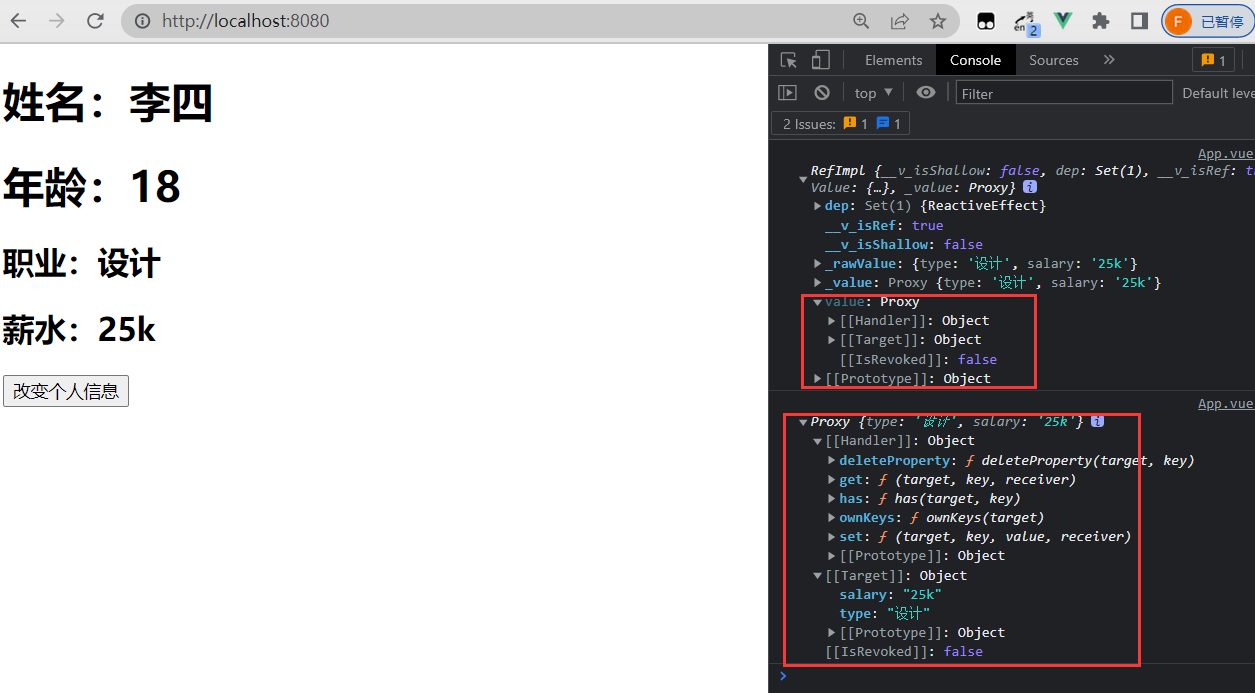
注意:
- 接收的数据可以是:基本类型、也可以是对象类型
- 基本类型的数据:响应式依然是靠
Object.defineProperty()的 get 与 set 完成的 - 对象类型的数据:内部 “ 求助 ” 了 Vue3.0 中的一个新函数—— reactive 函数
3.3 reactive 函数
- 作用:定义一个对象类型的响应式数据(基本类型不要用它,要用 ref 函数)
- 语法:
const 代理对象 = reactive(源对象),接收一个对象(或数组),返回一个代理对象(Proxy 的实例对象,简称 Proxy 对象) - reactive 定义的响应式数据是“深层次的”
- 内部基于 ES6 的 Proxy 实现,通过代理对象操作源对象内部数据进行操作
将 3.2 的对象类型示例修改一下,使用 reactive 来定义对象类型数据,如下:
<template>
<h1>姓名:{{name}}</h1>
<h1>姓名:{{age}}</h1>
<h2>职业:{{job.type}}</h2>
<h2>薪水:{{job.salary}}</h2>
<button @click="changeInfo">改变个人信息</button>
</template>
<script>
import { reactive, ref } from 'vue';
export default {
name: 'App',
setup() {
// 数据
let name = ref('李四')
let age = ref(18)
// let job = ref({
// type: '开发',
// salary: '20k'
// })
let job = reactive({
type: '开发',
salary: '20k'
})
// 方法
function changeInfo() {
// job.value.type = '设计'
// job.value.salary = '25k'
job.type = '设计'
job.salary = '25k'
console.log(job);
}
return {
name,
age,
job,
changeInfo
}
}
}
</script>
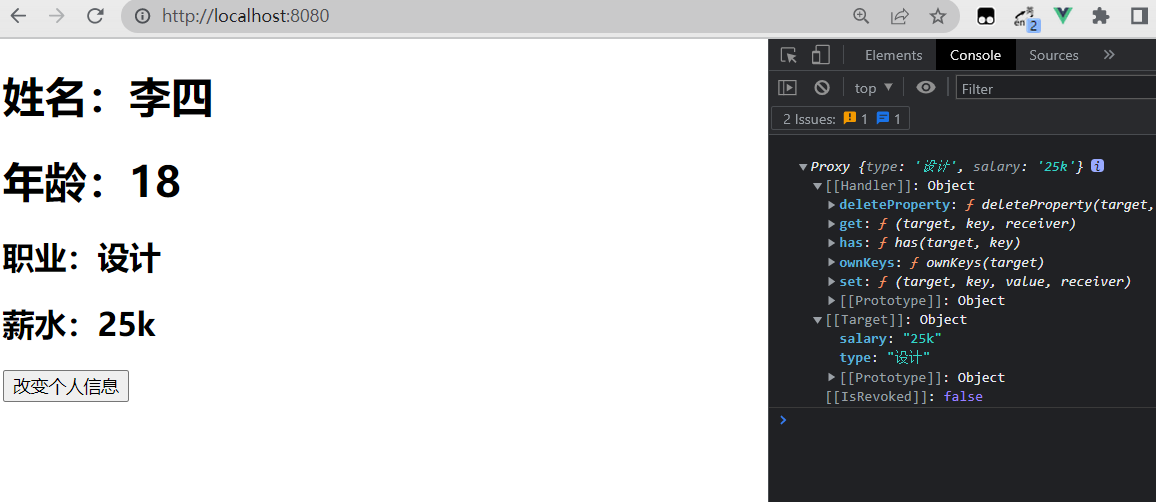
同时还可以响应数组类型以及进行深层次的响应
<template>
<h1>姓名:{{person.name}}</h1>
<h1>年龄:{{person.age}}</h1>
<h2>职业:{{person.job.type}}</h2>
<h2>薪水:{{person.job.salary}}</h2>
<h1>爱好:{{person.hobby}}</h1>
<button @click="changeInfo">改变个人信息</button>
</template>
<script>
import { reactive } from 'vue';
export default {
name: 'App',
setup() {
// 数据
let person = reactive({
name: '李四',
age: 18,
job: {
type: '开发',
salary: '20k'
},
hobby: ['看剧', '听歌']
})
// 方法
function changeInfo() {
person.name = '张三'
person.age = 20
person.job.type = '设计'
person.job.salary = '25k'
person.hobby[0] = '学习'
}
return {
person,
changeInfo
}
}
}
</script>
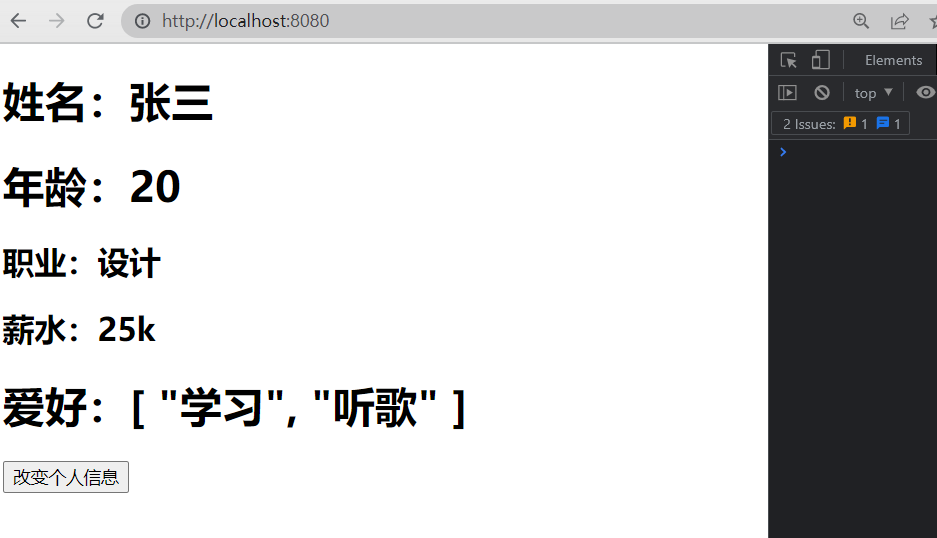
3.4 Vue3.0 中的响应式原理
3.4.1 Vue2.x 的响应式
实现原理:
- 对象类型:通过
Object.defineProperty()对属性的读取、修改进行拦截(数据劫持),但对新增和删除无法响应式的改变Object.defineProperty(data, 'count', { configurable: true, // 可配置,即可删除属性 get () { return ... }, set () { 响应... } }) - 数组类型:通过重写更新数组的一系列方法来实现拦截(对数组的变更方法进行了包裹)
存在问题:
- 直接新增属性、删除属性,界面不会更新,需要调用对应的函数(set、delete)
methods: { addSex(){ this.person.sex = '女'; // 不生效 this.$set(this.person, 'sex', '女') Vue.set(this.person, 'sex', '女') }, deleteName(){ this.$delete(this.person, 'name', '张三') Vue.delete(this.person, 'name', '张三') } }, - 直接通过下标修改数组,界面不会自动更新,同样可通过上面的方式修改,还可直接变更数组来修改
methods: { updateHobby(){ this.person.hobby[0] = '学习'; // 不生效 this.$set(this.person.hobby, 0, '学习') Vue.delete(this.person.hobby, 0, '学习') this.person.hobby.splice(0, 1, '学习') } },
3.4.2 Vue3.0 的响应式
实现原理:
-
通过Proxy(代理):拦截对象中任意属性的变化,包括属性值的读写、属性的添加、属性的删除等
-
通过Reflect(反射):对源对象的属性进行操作
<body> <script type="text/javascript"> let person = { name: '张三', age: 18 } // 模拟 Vue3中实现响应式 const p = new Proxy(person, { // 读取时调用 get(target, prop) { console.log(target, prop); return target[prop] }, // 修改或新增时调用 set(target, prop, value) { console.log(target, prop, value); target[prop] = value; }, // 删除时调用 deleteProperty(target, prop) { console.log(target, prop); return delete target[prop]; } }) </script> </body>对原对象的代理对象进行操作,而代理对象操作原对象
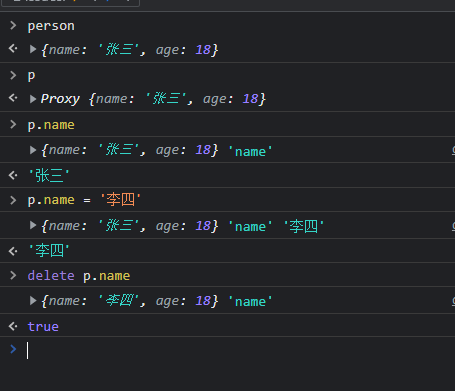
可以把上述操作交给 Reflect 去执行new Proxy(data, { // 拦截读取属性值 get (target, prop) { return Reflect.get(target, prop) }, // 拦截设置属性值或添加新属性 set (target, prop, value) { return Reflect.set(target, prop, value) }, // 拦截删除属性 deleteProperty (target, prop) { return Reflect.deleteProperty(target, prop) } }) proxy.name = 'tom' -
MDN 文档中描述的 Proxy 与 Reflect:
<template>
<h1>姓名:{{person.name}}</h1>
<h1>年龄:{{person.age}}</h1>
<h1 v-show="person.sex">性别:{{person.sex}}</h1>
<h2>职业:{{person.job.type}}</h2>
<h2>薪水:{{person.job.salary}}</h2>
<button @click="changeInfo">改变个人信息</button>
</template>
<script>
import { reactive } from 'vue';
export default {
name: 'App',
setup() {
// 数据
let person = reactive({
name: '李四',
age: 18,
job: {
type: '开发',
salary: '20k'
},
hobby: ['看剧', '听歌']
})
// 方法
function changeInfo() {
person.sex = '男'
delete person.name
person.hobby[0] = '学习'
}
return {
person,
changeInfo
}
}
}
</script>

3.5 reactive 对比 ref
1、 从定义数据角度对比
- ref 用来定义:基本类型数据
- reactive 用来定义:对象(或数组)类型数据
- 备注:ref 也可以用来定义对象(或数组)类型数据,它内部会自动通过 reactive 转为代理对象
2、从原理角度对比
- ref 通过
Object.defineProperty()的 get 与 set 来实现响应式(数据劫持) - reactive 通过使用 Proxy 来实现响应式(数据劫持),并通过 Reflect 操作源对象内部的数据
3、从使用角度对比
- ref 定义的数据:操作数据需要
.value,读取数据时模板中直接读取不需要.value - reactive 定义的数据:操作数据与读取数据:均不需要
.value
3.6 setup 的两个注意点
3.6.1 setup 执行的时机
在 beforeCreate 之前执行一次,this 是 undefined
3.6.2 setup 的参数
-
props:值为对象,包含:组件外部传递过来,且组件内部声明接收了的属性
App.vue 组件,传值进 Demo.vue<template> <Demo msg="你好" school="无" /> </template> <script> import Demo from './components/Demo.vue'; export default { name: 'App', components: { Demo } } </script>Demo.vue 组件,接收 App.vue 传进来的值
<template> <h1>个人信息</h1> <h2>姓名:{{person.name}}</h2> <h2>年龄:{{person.age}}</h2> </template> <script> import { reactive } from 'vue' export default { // eslint-disable-next-line vue/multi-word-component-names name: 'Demo', props: ['msg', 'school'], setup(props) { console.log(props); // 数据 let person = reactive({ name: '张三', age: 18 }) return { person } } } </script> <style> </style>
-
context:上下文对象
- attrs:值为对象,包含:组件外部传递过来,但没有在 props 配置中声明的属性, 相当于
this.$attrs - slots:收到的插槽内容, 相当于
this.$slots - emit:分发自定义事件的函数, 相当于
this.$emit
- attrs:值为对象,包含:组件外部传递过来,但没有在 props 配置中声明的属性, 相当于
App.vue,传值进 Demo.vue,同时传入自定义事件以及插槽
<template>
<Demo
msg="你好"
school="无"
@hello="showMsg"
>
<template v-slot:te>
<span>测试</span>
</template>
</Demo>
</template>
<script>
import Demo from './components/Demo.vue';
export default {
name: 'App',
setup() {
function showMsg(value) {
alert(`触发,参数是${value}`)
}
return {
showMsg
}
},
components: {
Demo
}
}
</script>
Demo.vue 组件,props 接收 App.vue 传进来的值,未接收的值在 attrs 里,emits 接收自定义事件,假如未写接收会报警告,但不影响使用,emit 触发 App.vue 里的自定义事件。插槽直接使用
<template>
<h1>个人信息</h1>
<h2>姓名:{{person.name}}</h2>
<h2>年龄:{{person.age}}</h2>
<button @click="hello">测试触发事件</button>
<slot name="te"></slot>
</template>
<script>
import { reactive } from 'vue'
export default {
// eslint-disable-next-line vue/multi-word-component-names
name: 'Demo',
props: ['msg'],
emits: ['hello'],
setup(props, context) {
console.log(props);
console.log(context.attrs);
console.log(context.emit);
console.log(context.slots);
// 数据
let person = reactive({
name: '张三',
age: 18
})
// 方法
function hello() {
context.emit('hello', 666);
}
return {
person,
hello
}
}
}
</script>
<style>
</style>

3.7 计算属性与监视
3.7.1 computed 函数(计算属性)
第一种写法:与 Vue2.x 中 computed 配置功能一致
<script>
import { reactive, computed } from 'vue'
export default {
// eslint-disable-next-line vue/multi-word-component-names
name: 'Demo',
computed: {
fullName() {
return this.person.firstName + '-' + this.person.lastName;
}
},
setup() {
// 数据
let person = reactive({
firstName: '张',
lastName: '三',
})
return {
person,
}
}
}
</script>
第二种写法,如下:
<template>
<h1>个人信息</h1>
姓:<input
type="text"
v-model="person.firstName"
/> <br>
名:<input
type="text"
v-model="person.lastName"
/> <br>
<span>全名: {{person.fullName}} </span> <br>
全名:<input
type="text"
v-model="person.fullName"
>
</template>
<script>
import { reactive, computed } from 'vue'
export default {
// eslint-disable-next-line vue/multi-word-component-names
name: 'Demo',
setup() {
// 数据
let person = reactive({
firstName: '张',
lastName: '三',
})
// 计算属性-简写(只读,不考虑计算属性被修改的情况)
person.fullName = computed(() => {
return person.firstName + '-' + person.lastName;
})
// 计算属性-完整写法(考虑读和写)
person.fullName = computed({
get() {
return person.firstName + '-' + person.lastName;
},
set(value) {
let nameArr = value.split('-');
person.firstName = nameArr[0]
person.lastName = nameArr[1]
}
})
return {
person,
}
}
}
</script>
<style>
</style>
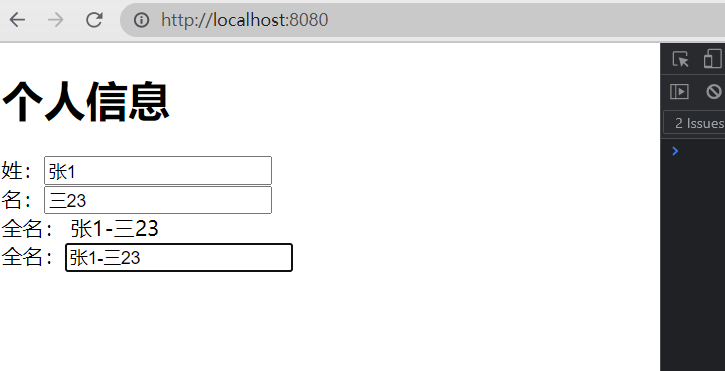
3.7.2 watch 函数(监视)
第一种写法:与 Vue2.x 中 computed 配置功能一致
<script>
import { ref } from 'vue'
export default {
// eslint-disable-next-line vue/multi-word-component-names
name: 'Demo',
watch: {
sum(newValue, oldValue) {
console.log('sum 的值变化了', newValue, oldValue);
}
},
// watch: {
// sum: {
// immediate: true, // 立即监视,一进来就会监视一下
// deep: true,
// handler(newValue, oldValue) {
// console.log('sum 的值变化了', newValue, oldValue);
// }
// }
// },
setup() {
// 数据
let sum = ref(0)
return {
sum,
}
}
}
</script>
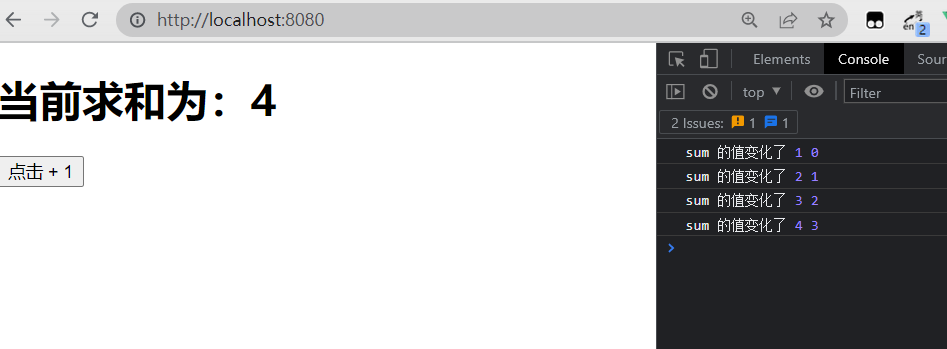
第二种写法,如下:
1、监视 ref 定义的数据
<template>
<h1>当前求和为:{{sum}} </h1>
<button @click="sum++">点击 + 1</button>
<hr>
<h1>当前信息为:{{msg}} </h1>
<button @click="msg += '!'">修改信息</button>
</template>
<script>
import { ref, watch } from 'vue'
export default {
// eslint-disable-next-line vue/multi-word-component-names
name: 'Demo',
setup() {
// 数据
let sum = ref(0)
let msg = ref('你好')
// 情况一,监视 ref 所定义的一个响应式数据
// watch(sum, (newValue, oldValue) => {
// console.log('sum 变了', newValue, oldValue);
// }, {immediate: true, deep: true})
// 情况二,监视 ref 所定义的多个响应式数据
watch([sum, msg], (newValue, oldValue) => {
console.log(newValue, oldValue);
}, { immediate: true, deep: true })
return {
sum,
msg
}
}
}
</script>
<style>
</style>
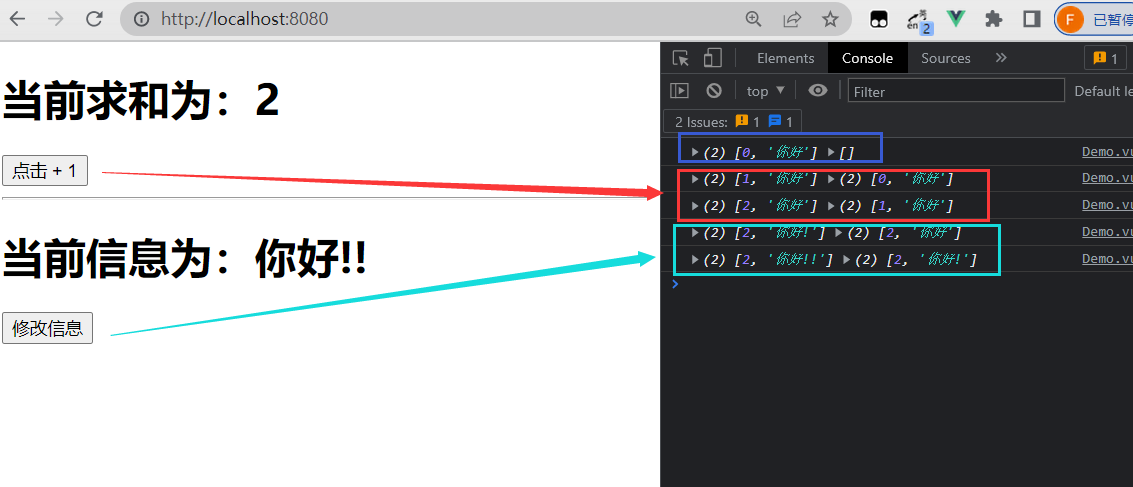
2、监视 reactive 定义的数据
<template>
<h1>当前姓名为:{{person.name}} </h1>
<button @click="person.name += '~'">修改姓名</button>
<hr>
<h1>当前年龄为:{{person.age}} </h1>
<button @click="person.age ++">修改年龄</button>
<hr>
<h2>职业:{{person.job.type}} </h2>
<h2>薪酬:{{person.job.salary}} </h2>
<button @click="person.job.type += '!'">修改职业</button>
</template>
<script>
import { reactive, watch } from 'vue'
export default {
// eslint-disable-next-line vue/multi-word-component-names
name: 'Demo',
setup() {
// 数据
let person = reactive({
name: '张三',
age: 18,
job: {
type: '开发',
salary: '25k'
}
})
// 情况一,监视 reactive 所定义的一个响应式数据的全部属性
// watch 监视的是 reactive 定义的响应式数据,则无法正确获得 oldValue!!
// 若watch 监视的是 reactive 定义的响应式数据,则强制开启了深度监视(deep 配置无效)
// watch(person, (newValue, oldValue) => {
// console.log('person变化', newValue, oldValue);
// }, { deep: false })
// 情况二:监视 reactive 所定义的一个响应式数据的某个属性
// watch(() => person.age, (newValue, oldValue) => {
// console.log('person 的age 变化了', newValue, oldValue);
// })
// 情况三:监视 reactive 所定义的一个响应式数据的某些属性
watch([() => person.age, () => person.name], (newValue, oldValue) => {
console.log('person 的age 变化了', newValue, oldValue);
})
// 特殊情况:监视的是 reactive 定义的属性中的某个对象属性,所以 deep 配置有效
watch(() => person.job, (newValue, oldValue) => {
console.log('person 的age 变化了', newValue, oldValue);
}, { deep: true })
return {
person
}
}
}
</script>
<style>
</style>
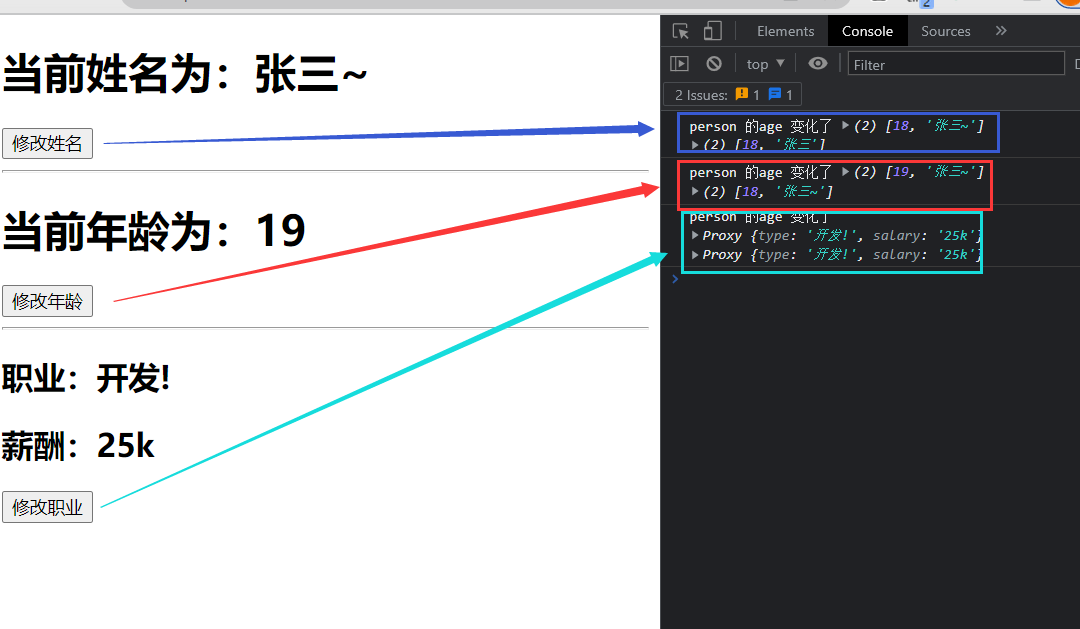
3.7.2 watchEffect 函数
- watch 的套路是:既要指明监视的属性,也要指明监视的回调
- watchEffect 的套路是:不用指明监视哪个属性,监视的回调中用到哪个属性,那就监视哪个属性
- watchEffect 有点像 computed:
- 但 computed 注重的计算出来的值(回调函数的返回值),所以必须要写返回值
- 而 watchEffect 更注重的是过程(回调函数的函数体),所以不用写返回值
<script>
import { reactive, watchEffect } from 'vue'
export default {
// eslint-disable-next-line vue/multi-word-component-names
name: 'Demo',
setup() {
// 数据
let sum = ref(0)
let person = reactive({
name: '张三',
age: 18,
job: {
type: '开发',
salary: '25k'
}
})
// watchEffect 所指定的回调中用到的数据只要发生变化,则直接重新执行回调
watchEffect(() => {
const x1 = person.name
const x2 = person.job.type
console.log('watchEffect 配置的回调执行了');
})
return {
person
}
}
}
</script>
3.8 生命周期
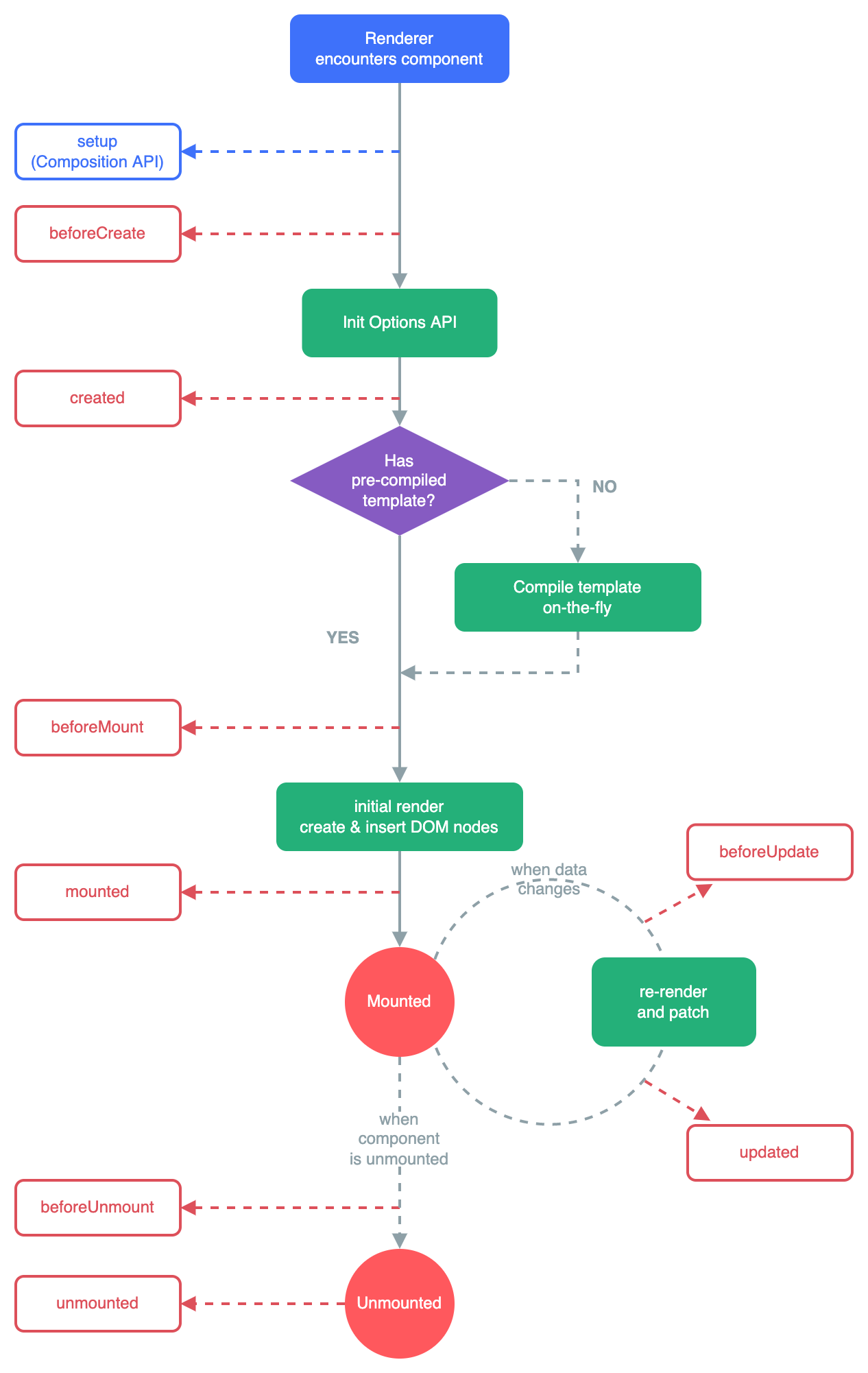
Vue3.0 中可以继续使用 Vue2.x 中的生命周期钩子,但有两个被更名:
- beforeDestroy 改名为 beforeUnmount
- destroyed 改名为 unmounted
App.vue
<template>
<button @click="isShowDemo = !isShowDemo">显示/隐藏Demo</button>
<Demo v-if="isShowDemo" />
</template>
<script>
import Demo from './components/Demo.vue';
import { ref } from 'vue'
export default {
name: 'App',
setup() {
let isShowDemo = ref(true)
return {
isShowDemo
}
},
components: {
Demo
}
}
</script>
Demo.vue
<template>
<h1>Demo</h1>
</template>
<script>
export default {
// eslint-disable-next-line vue/multi-word-component-names
name: 'Demo',
beforeCreate() {
console.log('---beforeCreate---');
},
created() {
console.log('---created---');
},
beforeMount() {
console.log('---beforeMount---');
},
mounted() {
console.log('---mounted---');
},
beforeUnmount() {
console.log('---beforeUnmount---');
},
unmounted() {
console.log('---unmounted--');
},
}
</script>

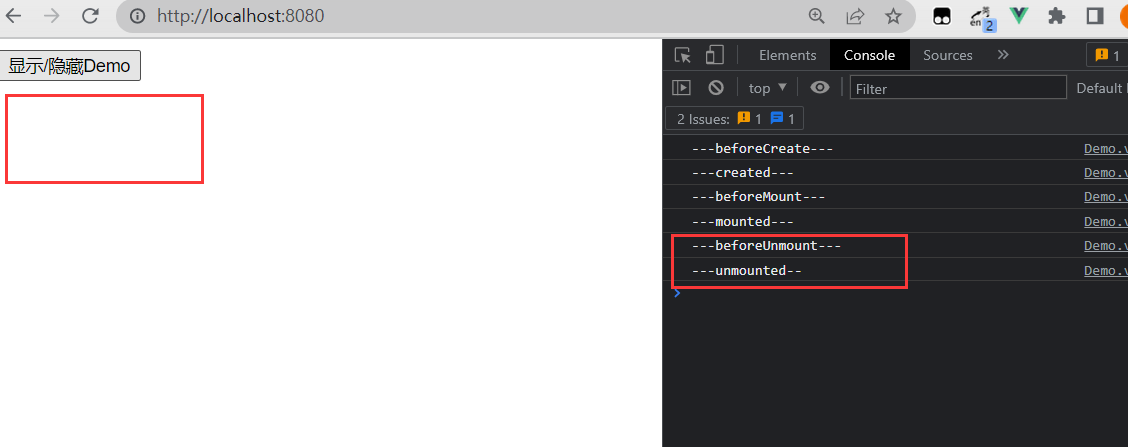
Vue3.0 也提供了 Composition API 形式的生命周期钩子,与 Vue2.x 中钩子对应关系如下:
- beforeCreate ===>
setup() - created ===>
setup() - beforeMount ===> onBeforeMount
- mounted ===> onMounted
- beforeUpdate ===> onBeforeUpdate
- updated ===> onUpdated
- beforeUnmount ==> onBeforeUnmount
- unmounted ===> onUnmounted
<template>
<h1>Demo</h1>
</template>
<script>
import { onBeforeMount, onMounted, onBeforeUpdate, onUpdated, onBeforeUnmount, onUnmounted } from 'vue'
export default {
// eslint-disable-next-line vue/multi-word-component-names
name: 'Demo',
setup() {
console.log('---setup()---');
onBeforeMount(() => {
console.log('---onBeforeMount---')
})
onMounted(() => {
console.log('---onMounted---');
})
onBeforeUpdate(() => {
console.log('---onBeforeUpdate---');
})
onUpdated(() => {
console.log('---onUpdated---');
})
onBeforeUnmount(() => {
console.log('---onBeforeUnmount---');
})
onUnmounted(() => {
console.log('---onUnmounted---');
})
}
}
</script>
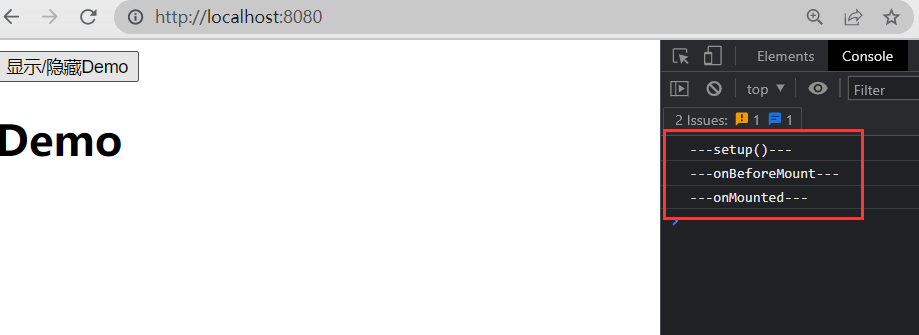

3.9 自定义 hook 函数
hook 本质是一个函数,把 setup 函数中使用的 Composition API 进行了封装。类似于 Vue2.x中的 mixin。可以复用代码,让 setup 中的逻辑更清楚易懂
如下,获取当前鼠标的位置
<template>
<h1>当前点击时鼠标的坐标为:X:{{point.x}},y:{{point.y}} </h1>
</template>
<script>
import { reactive, onMounted } from 'vue'
export default {
// eslint-disable-next-line vue/multi-word-component-names
name: 'Demo',
setup() {
let point = reactive({
x: 0,
y: 0
})
onMounted(() => {
window.addEventListener('click', (event) => {
point.x = event.pageX
point.y = event.pageY
})
})
return {
point
}
}
}
</script>
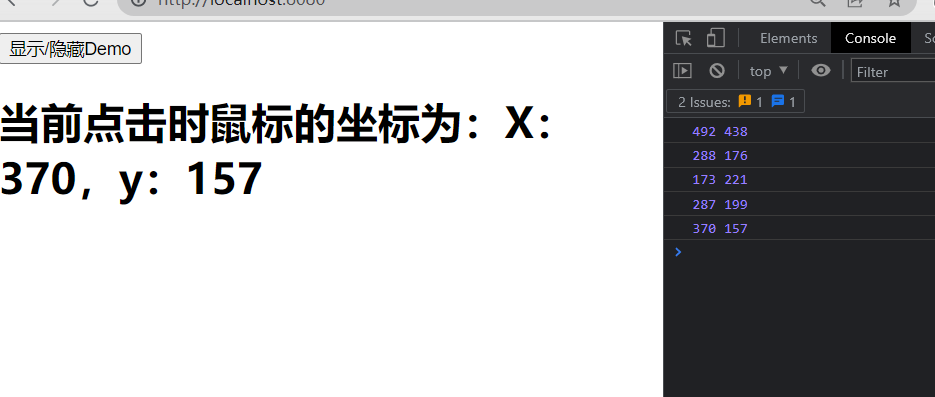
此时给 window 加了一个点击事件,只要点击页面就会获取页面的鼠标位置给 point,假如该组件卸载了,也还是会触发
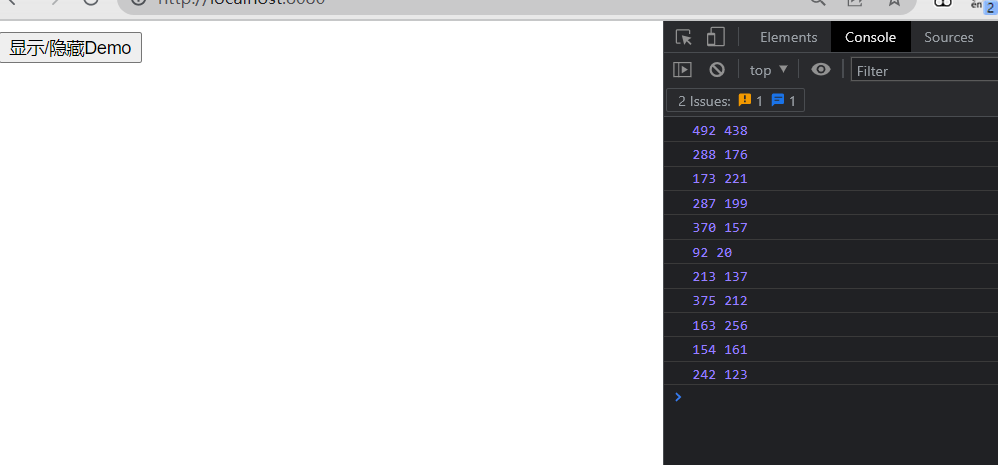
可以在组件卸载后,移除该点击事件。移除事件时需要传入移除的是哪个事件,所以将该点击事件单独写成一个函数
<script>
import { reactive, onMounted, onBeforeUnmount } from 'vue'
export default {
// eslint-disable-next-line vue/multi-word-component-names
name: 'Demo',
setup() {
let point = reactive({
x: 0,
y: 0
})
function savePoint(event) {
point.x = event.pageX
point.y = event.pageY
console.log(point.x, point.y);
}
onMounted(() => {
window.addEventListener('click', savePoint)
})
onBeforeUnmount(() => {
window.removeEventListener('click', savePoint)
})
return {
point
}
}
}
</script>
假如有另一个组件也想用该功能,复用这块代码,就可以将该功能相关的数据和函数抽离出来,形成一个 hook 函数
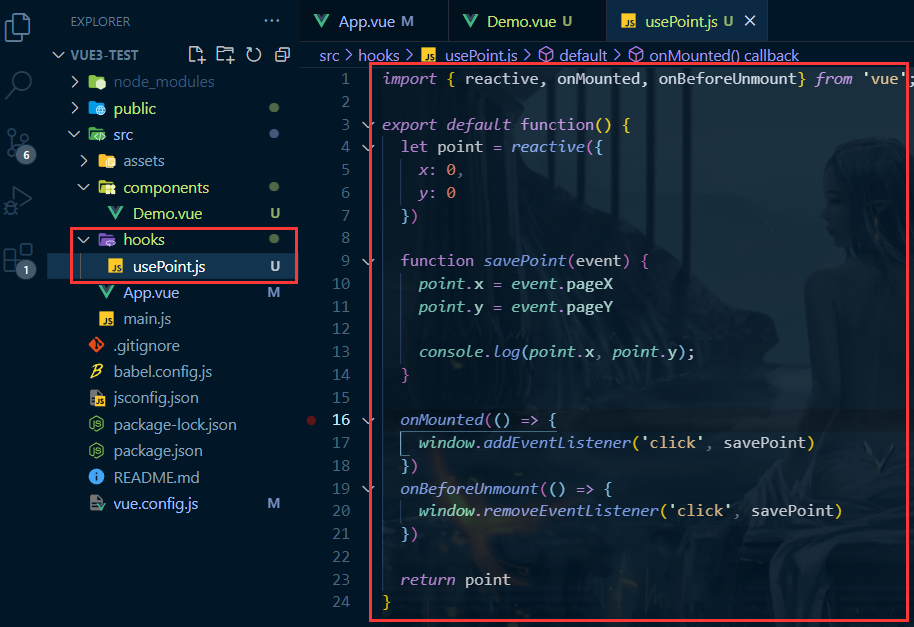
import { reactive, onMounted, onBeforeUnmount} from 'vue';
export default function() {
let point = reactive({
x: 0,
y: 0
})
function savePoint(event) {
point.x = event.pageX
point.y = event.pageY
console.log(point.x, point.y);
}
onMounted(() => {
window.addEventListener('click', savePoint)
})
onBeforeUnmount(() => {
window.removeEventListener('click', savePoint)
})
return point
}
使用时引入即可
<template>
<h1>当前点击时鼠标的坐标为:X:{{point.x}},y:{{point.y}} </h1>
</template>
<script>
import usePoint from '../hooks/usePoint'
export default {
// eslint-disable-next-line vue/multi-word-component-names
name: 'Demo',
setup() {
let point = usePoint()
return {
point
}
}
}
</script>
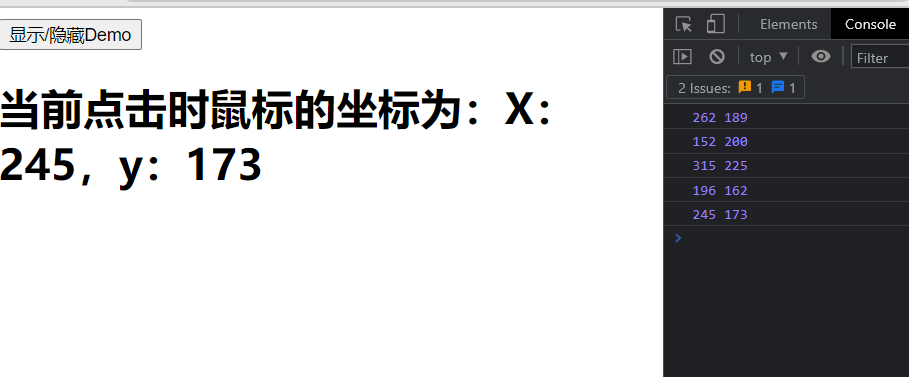
3.10 toRef
创建一个 ref 对象,其 value 值指向另一个对象中的某个属性。
- 语法:
const name = toRef(person, 'name')
用于要将响应式对象中的某个属性单独提供给外部使用时,如下,将 person 对象里的name、age 等属性单独提供给外部使用
<template>
<h1>姓名: {{name}} </h1>
<h1>年龄: {{age}} </h1>
<h1>薪资: {{salary}} </h1>
<button @click="name += '~'">修改姓名</button>
<button @click="age ++">修改年龄</button>
<button @click="salary ++">修改薪资</button>
</template>
<script>
import { reactive, toRef } from '@vue/reactivity'
export default {
// eslint-disable-next-line vue/multi-word-component-names
name: 'Demo',
setup() {
let person = reactive({
name: '张三',
age: 18,
job: {
j1: {
salary: 20
}
}
})
return {
// name: ref(person, 'name')
name: toRef(person, 'name'),
age: toRef(person, 'age'),
salary: toRef(person.job.j1, 'salary')
}
}
}
</script>

具有响应式效果,且此时 toRef 这里操纵的数据,就是原先的 person对象里的数据,修改即同步修改 person 对象里的对应的值
假如直接使用 ref 来转换,如:ref(person.name),操纵的是这个用 person 对象的 name 属性值新建的 ref 对象,而不再与原本的 person 对象的 name 有联系
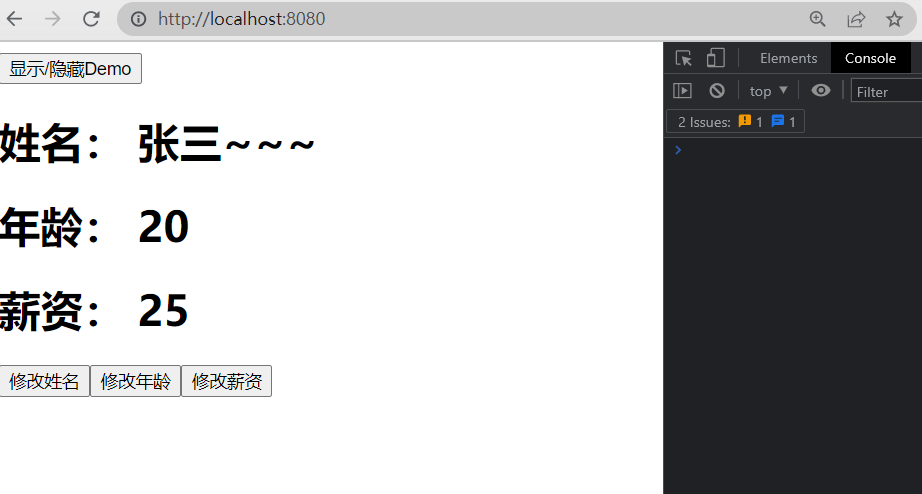
toRefs 与 toRef 功能一致,但可以批量创建多个 ref 对象,即把整个对象都抛出去,语法:toRefs(person),但只能定位到第外层的属性
<h1>姓名: {{name}} </h1>
<h1>年龄: {{age}} </h1>
<h1>薪资: {{job.j1.salary}} </h1>
...toRefs(person)
// name: toRef(person, 'name'),
// age: toRef(person, 'age'),
// salary: toRef(person.job.j1, 'salary')
4. 其它 Composition API
4.1 shallowReactive 与 shallowRef
- shallowReactive:只处理对象最外层属性的响应式(浅响应式)
- shallowRef:只处理基本数据类型的响应式,不进行对象的响应式处理
let person = shallowReactive ({
name: '张三',
age: 18,
job: {
j1: {
salary: 20
}
}
})
什么时候使用?
- 如果有一个对象数据,结构比较深, 但变化时只是外层属性变化 ===> shallowReactive
- 如果有一个对象数据,后续功能不会修改该对象中的属性,而是生新的对象来替换 ===> shallowRef
4.2 readonly 与 shallowReadonly
- readonly:让一个响应式数据变为只读的(深只读)
- shallowReadonly:让一个响应式数据变为只读的(浅只读)
let person = reactive ({
name: '张三',
age: 18,
job: {
j1: {
salary: 20
}
}
})
person = readonly(person)
应用于不希望数据被修改时
4.3 toRaw 与 markRaw
toRaw
- 作用:将一个由 reactive 生成的响应式对象转为普通对象
使用场景:用于读取响应式对象对应的普通对象,对这个普通对象的所有操作,不会引起页面更新
const p = toRaw(person)
markRaw
- 作用:标记一个对象,使其永远不会再成为响应式对象
应用场景:
- 有些值不应被设置为响应式的,例如复杂的第三方类库等
- 当渲染具有不可变数据源的大列表时,跳过响应式转换可以提高性能
person.car = markRaw(person)
4.4 customRef
创建一个自定义的 ref,并对其依赖项跟踪和更新触发进行显式控制
如下例,实现防抖效果
<template>
<input
type="text"
v-model="keyWord"
/>
<h1> {{keyWord}} </h1>
</template>
<script>
import { customRef } from 'vue'
export default {
name: 'App',
setup() {
// 自定义一个 ref
function myRef(value, delay) {
let timer;
return customRef((track, trigger) => {
return {
get() {
// 通知 Vue 追踪数据变化(提前约定)
track();
return value;
},
set(newValue) {
value = newValue;
clearTimeout(timer);
timer = setTimeout(() => {
// 通知 Vue 去重新解析模板(调用一下 get() 方法)
trigger();
}, delay);
}
}
})
}
// let keyWord = ref('hello') // 使用 Vue 提供的 ref
let keyWord = myRef('hello', '500') // 使用自定义的 ref
return {
keyWord,
myRef
}
},
}
</script>

4.5 provide 与 inject
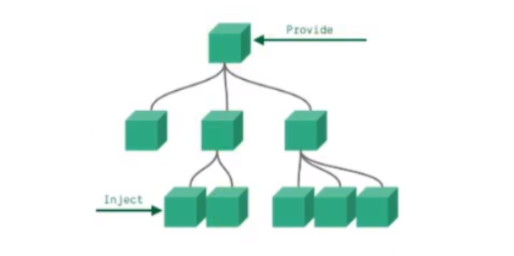
实现祖与后代组件间通信,父组件有一个 provide 选项来提供数据,后代组件有一个 inject 选项来开始使用这些数据
如下,祖组件 App.vue
<template>
<div class="app">
<h1> App 组件(祖),{{name}}---{{price}} </h1>
<Child />
</div>
</template>
<script>
import { reactive, toRefs } from '@vue/reactivity'
import Child from './components/Child.vue'
import { provide } from '@vue/runtime-core'
export default {
name: 'App',
setup() {
let car = reactive({
name: '奔驰',
price: '40w'
})
provide('car', car)
return {
...toRefs(car)
}
},
components: {
Child
}
}
</script>
子组件,Child.vue
<template>
<div class="child">
<h1> Child组件(子)</h1>
<Son />
</div>
</template>
<script>
import Son from './Son.vue'
export default {
// eslint-disable-next-line vue/multi-word-component-names
name: 'Child',
components: {
Son
}
}
</script>
孙组件,Son.vue
<template>
<div class="son">
<h1> Son组件(孙),{{car.name}}---{{car.price}}</h1>
</div>
</template>
<script>
import { inject } from '@vue/runtime-core'
export default {
// eslint-disable-next-line vue/multi-word-component-names
name: 'Son',
setup() {
let car = inject('car')
return {
car
}
}
}
</script>

4.6 响应式数据的判断
- isRef:检查一个值是否为一个 ref 对象
- isReactive:检查一个对象是否是由 reactive 创建的响应式代理
- isReadonly:检查一个对象是否是由 readonly 创建的只读代理
- isProxy:检查一个对象是否是由 reactive 或者 readonly 方法创建的代理
let car = reactive({name: '奔驰', price: '40w'})
let sum = ref(0)
let car2 = readonly(car)
console.log(isReactive(car))
console.log(isRef(sum))
console.log(isReadonly(car2))
console.log(isReadonly(isProxy))
5. Composition API 的优势
5.1 Options API 存在的问题
Vue2 使用的传统 Options API 中,新增或者修改一个需求,就需要分别在 data,methods,computed 里修改


5.2 Composition API 的优势
可以更加优雅的组织我们的代码,函数。让相关功能的代码更加有序的组织在一起


6. 新的组件
6.1 Fragment
在 Vue2 中:组件必须有一个根标签。在 Vue3 中:组件可以没有根标签,内部会将多个标签包含在一个 Fragment 虚拟元素中,可以减少标签层级, 减小内存占用
<template>
<h1>111</h1>
<h1>222</h1>
</template>

6.2 Teleport
能够将组件 html 结构移动到指定位置
如下,直接打开弹窗会撑开组件及其父组件的高度

组件 Son.vue
<template>
<div class="son">
<h1> Son 组件(孙)</h1>
<Dialog />
</div>
</template>
<script>
import Dialog from './Dialog.vue'
export default {
// eslint-disable-next-line vue/multi-word-component-names
name: 'Son',
components: {
Dialog
}
}
</script>
组件 Dialog.vue
<template>
<button @click="isShow = true"> 点击弹窗 </button>
<div
v-if="isShow"
class="dialog"
>
<h1>弹窗内容</h1>
<h1>弹窗内容</h1>
<h1>弹窗内容</h1>
<button @click="isShow = false">关闭弹窗</button>
</div>
</template>
<script>
import { ref } from '@vue/reactivity';
export default {
// eslint-disable-next-line vue/multi-word-component-names
name: 'Dialog',
setup() {
let isShow = ref(false);
return {
isShow
}
}
}
</script>
利用 Teleport 将弹窗移动到 body 上
<template>
<button @click="isShow = true"> 点击弹窗 </button>
<teleport to='body'>
<div
v-if="isShow"
class="mask"
>
<div class="dialog">
<h1>弹窗内容</h1>
<h1>弹窗内容</h1>
<h1>弹窗内容</h1>
<button @click="isShow = false">关闭弹窗</button>
</div>
</div>
</teleport>
</template>
<script>
import { ref } from '@vue/reactivity';
export default {
// eslint-disable-next-line vue/multi-word-component-names
name: 'Dialog',
setup() {
let isShow = ref(false);
return {
isShow
}
}
}
</script>
<style>
.mask {
position: absolute;
top: 0;
bottom: 0;
left: 0;
right: 0;
background-color: rgba(0, 0, 0, 0.5);
}
.dialog {
position: absolute;
top: 50%;
left: 50%;
transform: translate(-50%, -50%);
text-align: center;
background-color: green;
width: 300px;
height: 300px;
}
</style>
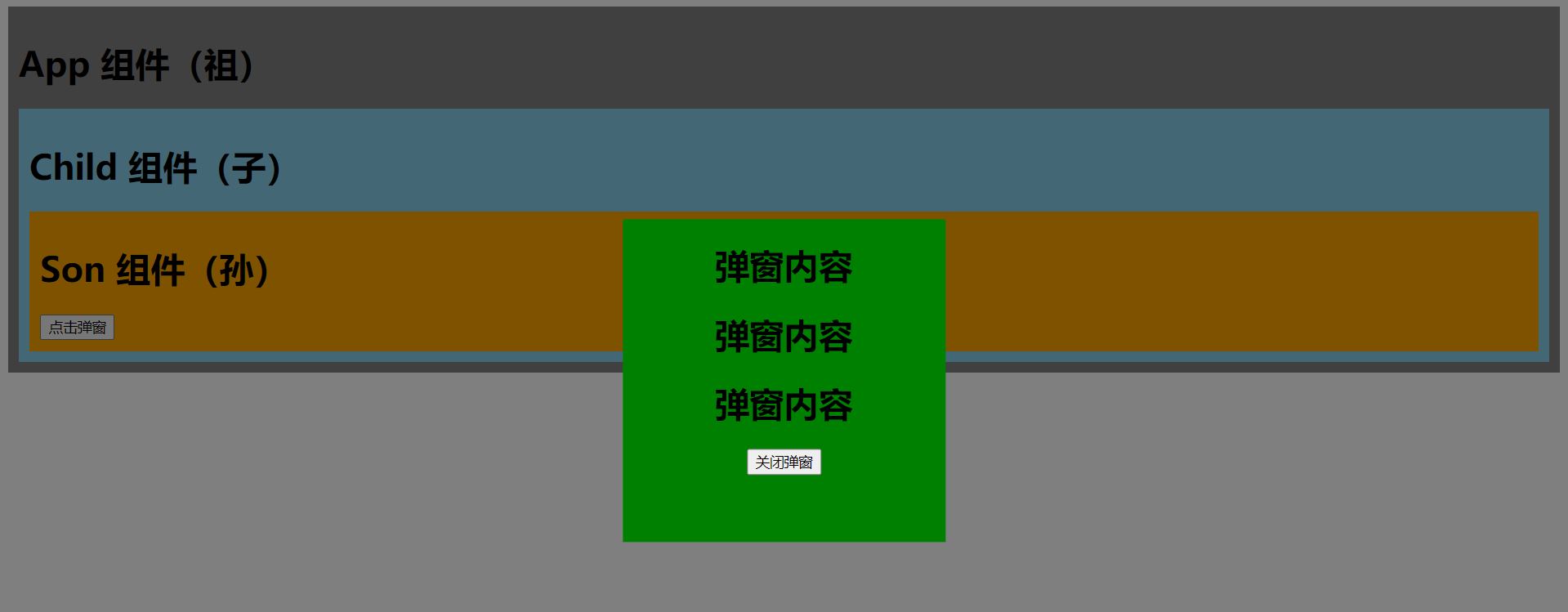
6.3 Suspense
等待异步组件时渲染一些额外内容,让应用有更好的用户体验
静态引入
<template>
<div class="app">
<h1> App 组件(祖)</h1>
<Child />
</div>
</template>
<script>
import Child from './components/Child.vue' // 静态引入
export default {
name: 'App',
components: {
Child
}
}
</script>
将网速调慢,祖组件和后代组件是一起出来的

异步引入
<template>
<div class="app">
<h1> App 组件(祖)</h1>
<Child />
</div>
</template>
<script>
// import Child from './components/Child.vue' //静态引入
import { defineAsyncComponent } from '@vue/runtime-core' // 静态引入
const Child = defineAsyncComponent(() => import('./components/Child.vue')) // 异步引入
export default {
name: 'App',
components: {
Child
}
}
</script>
网速慢的情况下,会先出现祖组件,再出现后代组件

此时有个问题,假如 Child 组件没有加载出来,其所在的位置是空的,并不知道到底有没有内容。使用 Suspense 解决如下:
<template>
<div class="app">
<h1> App 组件(祖)</h1>
<Suspense>
<template v-slot:default>
<Child />
</template>
<template v-slot:fallback>
<h3>稍等,加载中...</h3>
</template>
</Suspense>
</div>
</template>
<script>
// import Child from './components/Child.vue' //静态引入
import { defineAsyncComponent } from '@vue/runtime-core' // 静态引入
const Child = defineAsyncComponent(() => import('./components/Child.vue')) // 异步引入
export default {
name: 'App',
components: {
Child
}
}
</script>

使用了异步引入后,该组件是一个异步组件,则 setup() 可以用 async 修一个异步函数
<script>
import { ref } from 'vue';
export default {
// eslint-disable-next-line vue/multi-word-component-names
name: 'Child',
async setup() {
let sum = ref(0)
let p = new Promise((resove, reject) => {
setTimeout(() => {
resove(sum)
}, 3000);
})
return await p;
}
}
</script>
之前是通过把网速调慢来实现等待 Child 组件出现的效果,使用异步函数之后,网速正常也能让 Child 组件等待后才出现

7. 其他变化
7.1 全局 API 的转移
Vue 2.x 有许多全局 API 和配置,例如:注册全局组件、注册全局指令等
//注册全局组件
Vue.component('MyButton', {
data: () => ({
count: 0
}),
template: '<button @click="count++">Clicked {{ count }} times.</button>'
})
//注册全局指令
Vue.directive('focus', {
inserted: el => el.focus()
}
Vue3.0 中对这些 API 做出了调整,将全局的 API,即:Vue.xxx 调整到应用实例(app)上
| 2.x 全局 API(Vue) | 3.x 实例 API (app) |
|---|---|
| app.config.xxxx | app.config.xxxx |
| Vue.config.productionTip | 移除 |
| Vue.component | app.component |
| Vue.directive | app.directive |
| Vue.mixin | app.mixin |
| Vue.use | app.use |
| Vue.prototype | app.config.globalProperties |
7.2 其他改变
- data 选项应始终被声明为一个函数
// data { } data() { } - 过度类名的更改:
- Vue2.x 写法
.v-enter, .v-leave-to { opacity: 0; } .v-leave, .v-enter-to { opacity: 1; } - Vue3.x 写法
.v-enter-from, .v-leave-to { opacity: 0; } .v-leave-from, .v-enter-to { opacity: 1; }
- Vue2.x 写法
- 移除 keyCode 作为 v-on 的修饰符,同时也不再支持 config.keyCodes
// @keyup.13 // Vue.config.keyCodes.enter = 13 - 移除 v-on.native 修饰符,给组件传递事件时,Vue2 会将 click 事件也认为是自定义事件,需要加 native 来表示是原生事件。Vue3 则用 emit 来指定自定义事件,没有指定的就是原生事件
- 父组件中绑定事件
<my-component v-on:close="handleComponentEvent" v-on:click="handleNativeClickEvent" /> - 子组件中声明自定义事件
<script> export default { emits: ['close'] } </script>
- 父组件中绑定事件
- 移除过滤器(filter)
过滤器虽然看起来很方便,但它需要一个自定义语法,打破大括号内表达式是 “只是 JavaScript” 的假设,这不仅有学习成本,而且有实现成本!建议用方法调用或计算属性去替换过滤器 - ......



